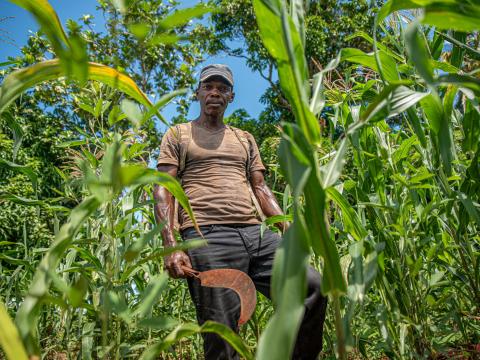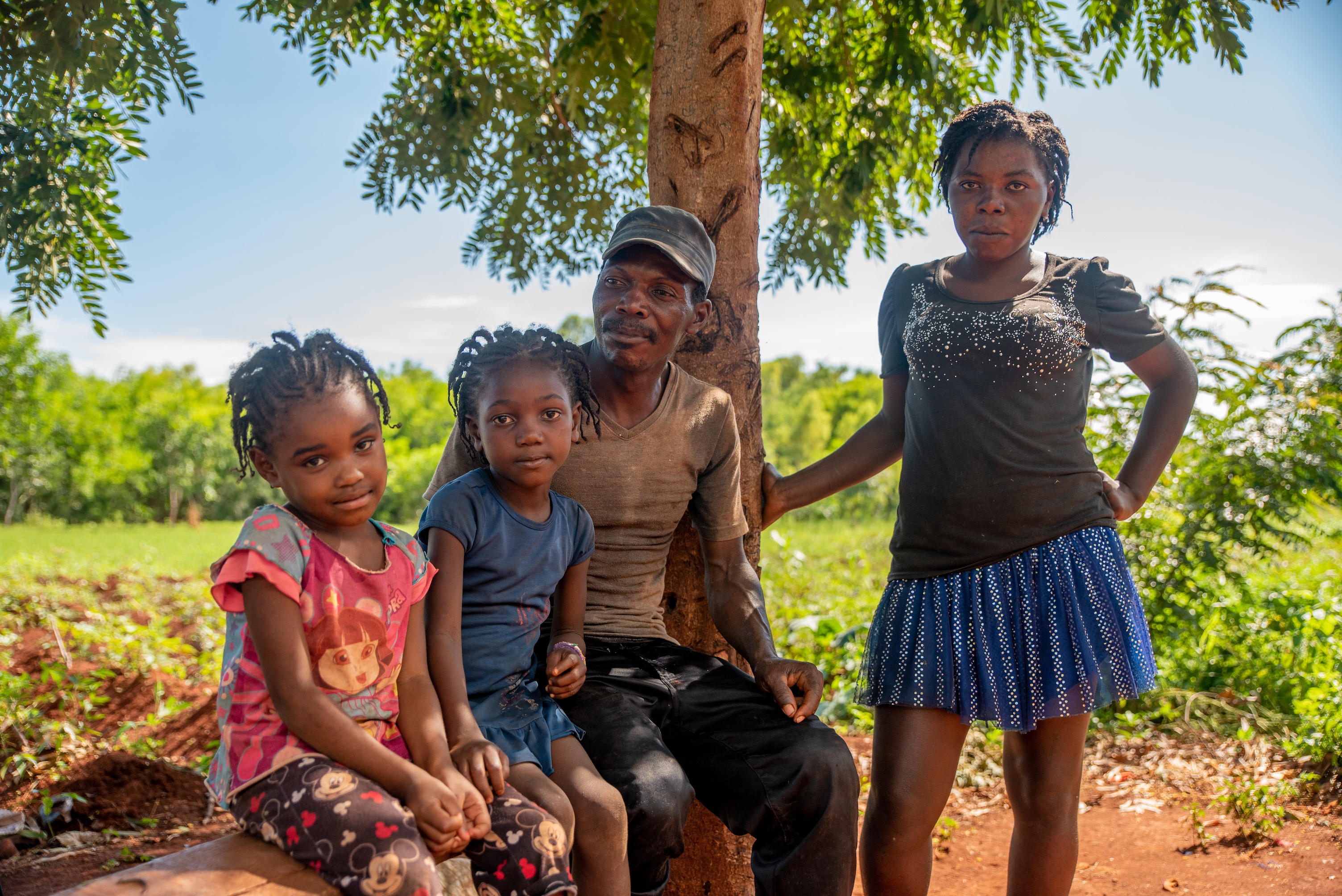The Struggle of Growing Crops on a Disappearing Land

The life of a small farmer in rural Haiti can be incredibly challenging. Erratic rains and a lack of good seeds can make it difficult to produce a successful harvest, leaving families with limited options. Farmers like Jean Claude are often forced to sell their harvest before it even grows to provide for their families or send their children to school. This struggle is compounded by a growing economic crisis, which has led to skyrocketing food prices and rampant malnutrition in the area Jean Claude Myrthil, a Haitian farmer living in Lotoré with nine people in his house, wife and children, received support from World Vision in the form of a bag of watermelon seeds, corn seeds, Congo beans, and four goats. With this support, his life has improved, as he received enough corn to harvest 90 marmites (250 kg), which he will use to send his seven children to school and to feed them breakfast. However, Jean Claude has been struggling, so much so that he has had to sell his harvest before it grows to buy rice for the family or to pay for school fees.
Jean Claude Myrthil, a Haitian farmer living in Lotoré with nine people in his house, wife and children, received support from World Vision in the form of a bag of watermelon seeds, corn seeds, Congo beans, and four goats. With this support, his life has improved, as he received enough corn to harvest 90 marmites (250 kg), which he will use to send his seven children to school and to feed them breakfast. However, Jean Claude has been struggling, so much so that he has had to sell his harvest before it grows to buy rice for the family or to pay for school fees.
Climate change impacts small farmers in rural areas, particularly in Haiti, where a lack of good seeds and erratic rainfall contribute to poor harvests. Data on climate change and its impact on small farmers in Haiti only underscores the severity of the situation. For example, the island of La Gonave has an agricultural surface area of only 48.19 km2, which needs to be improved to support a self-sustaining economy to feed its local population. Agricultural land in the area has been decreasing at a rate of 2.5 hectares per year, with a 39.7% decrease over the past two decades. Government conservation policies for the island are largely nonexistent, leaving inhabitants with few options beyond charcoal production and fishing as their primary livelihoods.
Moreover, La Gonave is characterized by long drought periods, sometimes as long as seven months, and access to clean water and appropriate sanitation is limited, ranging from 36% to 61% and averaging only 29% respectively.
Corn is one of the crops that is neglected for fertilization, relying solely on the potential of the soil and the residue from previous crops. Although corn consumption is relatively stable in Haiti, it is often used as a substitute for rice or bulgur wheat, with grilled sweet corn sold almost everywhere on the street. Despite this, La Gonâve, one of Haiti's most food-insecure regions, is currently experiencing extreme food insecurity in its rural areas, with poor spring and fall harvests, leaving 45% of households (about 40,000 people in the CPI 3 and 4 range) at risk of severe food crisis if emergency assistance is not provided.
Small farmers in rural Haiti are facing enormous challenges. Jean Claude said, "In the past, we knew when it would start to rain, and we could plan when to buy seeds, prepare the fields, and start sowing. But lately, the rain has been hit or miss. Sometimes, you sow in the hope that it will rain, and it doesn't, and all your work is burned with the sun. Then it rains, and it is torrential. The fields are soaked, and the crops die. There is only one common ending for both situations. We fall more and more into poverty."
La Gonave has seen a 39.7% decrease in agricultural land over two decades, and access to clean water and appropriate sanitation is limited. Moreover, Haiti is the third most affected country by extreme weather events, making farming even more challenging. The island's inhabitants often turn to charcoal production and fishing as their main livelihoods, leading to environmental degradation. A food crisis compounds these difficulties: half of Haiti's population (4.7 million people) experiences food insecurity. Small farmers account for more than half of the world's hungry people, and at least 80% of the world's hungry people live in places prone to natural disasters and environmental degradation, like many of the poorest areas in the world.